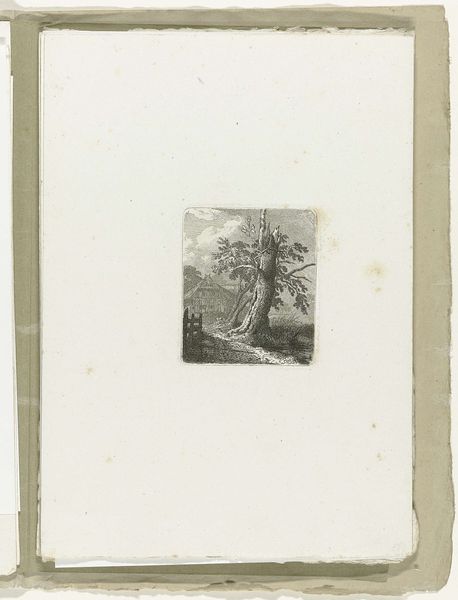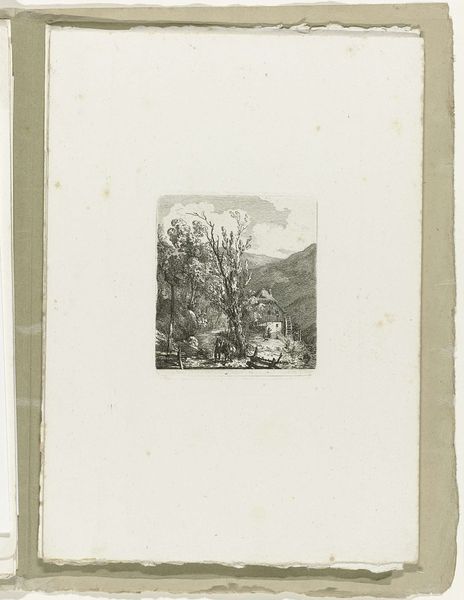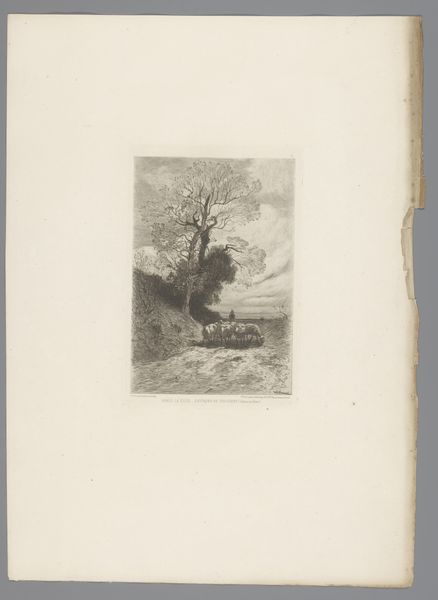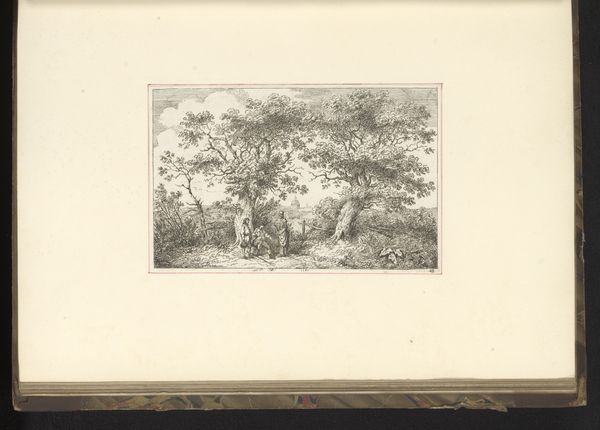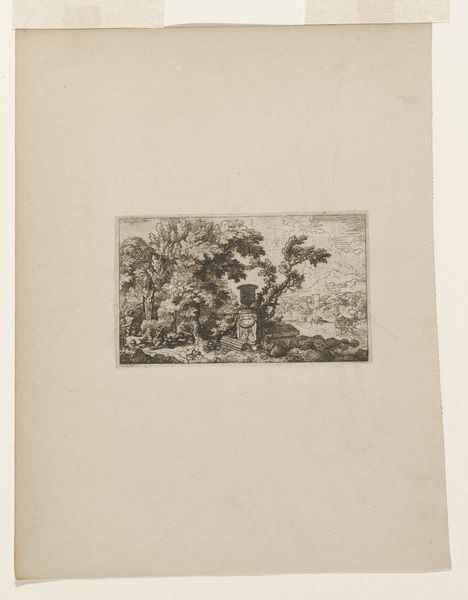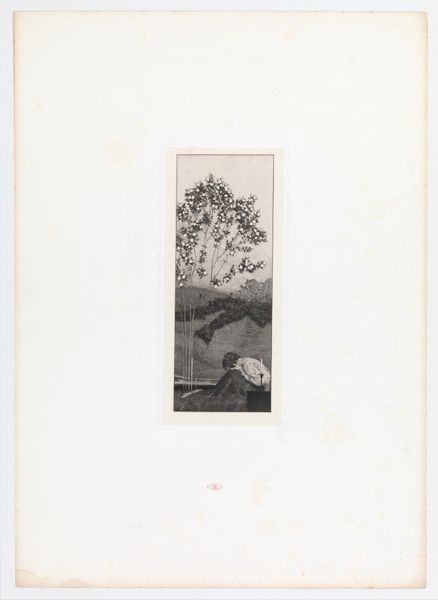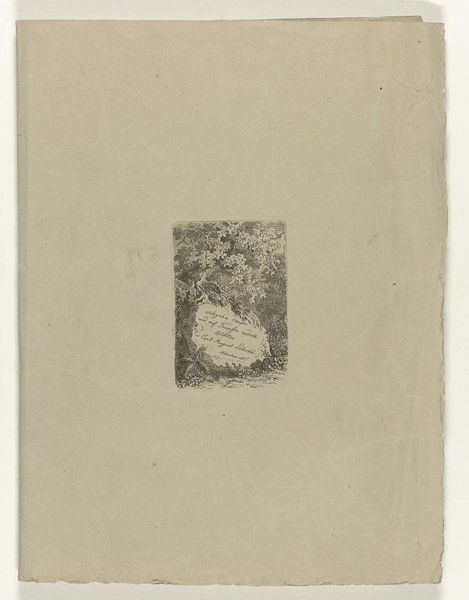
drawing, print, etching, paper
#
drawing
# print
#
etching
#
landscape
#
paper
#
romanticism
#
watercolor
Dimensions: height 86 mm, width 71 mm, height 280 mm, width 181 mm
Copyright: Rijks Museum: Open Domain
Curator: Look at this intricate etching by Carl August Lebschee, titled "Cross on a Mountain Path Over a Brook," created around 1827. Editor: It possesses such a stark, almost haunting quality despite its diminutive size, doesn’t it? The contrasts in light and shadow certainly catch the eye. Curator: Absolutely. Considering the period in which Lebschee was active, this landscape embodies elements of Romanticism. The cross itself—its positioning beside a wild and possibly dangerous brook— speaks to ideas of faith amidst the overwhelming power of nature and spirituality. Editor: I’m intrigued by the tree that visually dominates the piece. Notice the manner in which its branches reach up, creating this interplay of forms against the sky and framing the scene—there is definitely a deliberate semiotic purpose. Curator: Right, and if we delve deeper into the socio-political contexts, it's relevant to remember how religious imagery was deployed at the time, serving sometimes to reinforce conservative ideologies while also providing solace to those experiencing immense social change brought about by industrialization. Editor: One might view the brook itself structurally as a divide in the scene, its curves lead one into the beyond... It echoes, for me, the infinite unknown, something deeply symbolic and fundamental in understanding life, loss and even rebirth. Curator: Considering the audience, it also asks us to meditate on how the accessibility of nature intersects with questions of social class, who could actually afford leisure time amidst picturesque vistas in the 19th Century. The etching could simultaneously reflect a genuine connection with nature, and a subtle commentary on societal inequalities. Editor: Perhaps. In a way, it showcases Lebschee's mastery of composition through a very limited palette, achieving so much depth and dimension using simply line and tone. The visual harmony almost overshadows any narrative tension! Curator: So, viewing it through these lenses allows us to move beyond just aesthetics; and to appreciate the dialogues it enables across history, nature, and the individual. Editor: Indeed! Art like this continually reshapes how we interpret the world around us—revealing deeper insights into not only formal constructions, but its role and function to a specific historical period, and to us, viewing today.
Comments
No comments
Be the first to comment and join the conversation on the ultimate creative platform.
